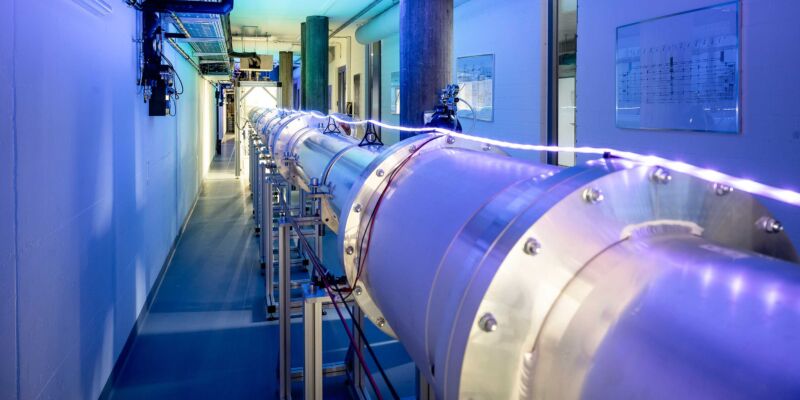A new experiment uses superconducting qubits to demonstrate that quantum mechanics violates what's called local realism by allowing two objects to behave as a single quantum system no matter how large the separation between them. The experiment wasn't the first to show that local realism isn't how the Universe works—it's not even the first to do so with qubits.
But it's the first to separate the qubits by enough distance to ensure that light isn't fast enough to travel between them while measurements are made. And it did so by cooling a 30-meter-long aluminum wire to just a few milliKelvin. Because the qubits are so easy to control, the experiment provides a new precision to these sorts of measurements. And the hardware setup may be essential for future quantum computing efforts.
Getting real about realism
Albert Einstein was famously uneasy with some of the consequences of quantum entanglement. If quantum mechanics were right, then a pair of entangled objects would behave as a single quantum system no matter how far apart the objects were. Altering the state of one of them should instantly alter the state of the second, with the change seemingly occurring faster than light could possibly travel between the two objects. This, Einstein argued, almost certainly had to be wrong.
Over the years, people have proposed various versions of what are called hidden variables—physical properties that are shared between the objects, enabling entanglement-like behavior while keeping the information that dictates that behavior localized. Hidden variables preserve what's called "local realism" but turn out not to actually describe our reality.
Physicist John Bell showed that all local variable frameworks limit the degree to which the behavior of quantum objects can be correlated. But quantum mechanics predicts that the correlations should be higher than that. By measuring the behavior of pairs of entangled particles, we can determine whether they violate Bell's equations, and thus clearly demonstrate that hidden variables don't explain their behavior.
Initial steps toward this demonstration were bad for hidden variables but allowed loopholes—even though Bell's inequalities were violated, it remained possible that information was traveling between the quantum objects at the speed of light. But over the past few decades, the loopholes have gradually been closed and the Nobel Prizes handed out.
So why return to the experiments? Partly because qubits give us a great deal of control over the system, allowing us to rapidly perform a large number of experiments and probe the behavior of this entanglement. And partly because it's an interesting technical challenge. Superconducting qubits are controlled with microwave radiation, and entangling them requires moving some very low-energy microwave photons between the two. And doing that without environmental noise messing everything up is a serious challenge.



3175x175(CURRENT).thumb.jpg.b05acc060982b36f5891ba728e6d953c.jpg)

Recommended Comments
There are no comments to display.
Join the conversation
You can post now and register later. If you have an account, sign in now to post with your account.
Note: Your post will require moderator approval before it will be visible.